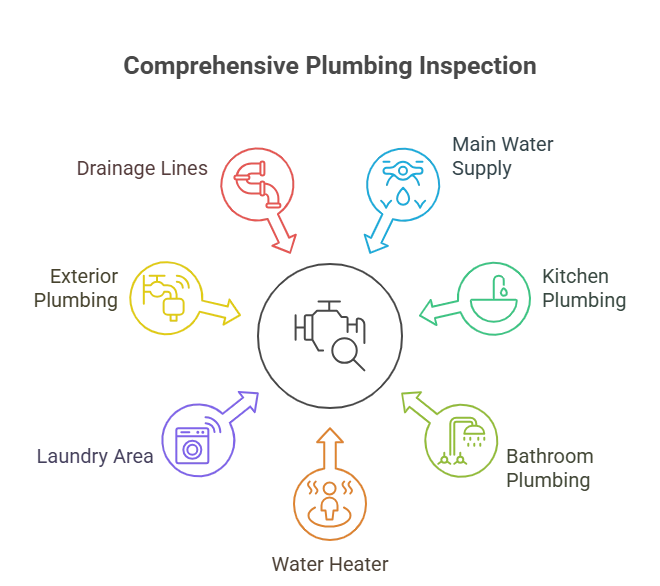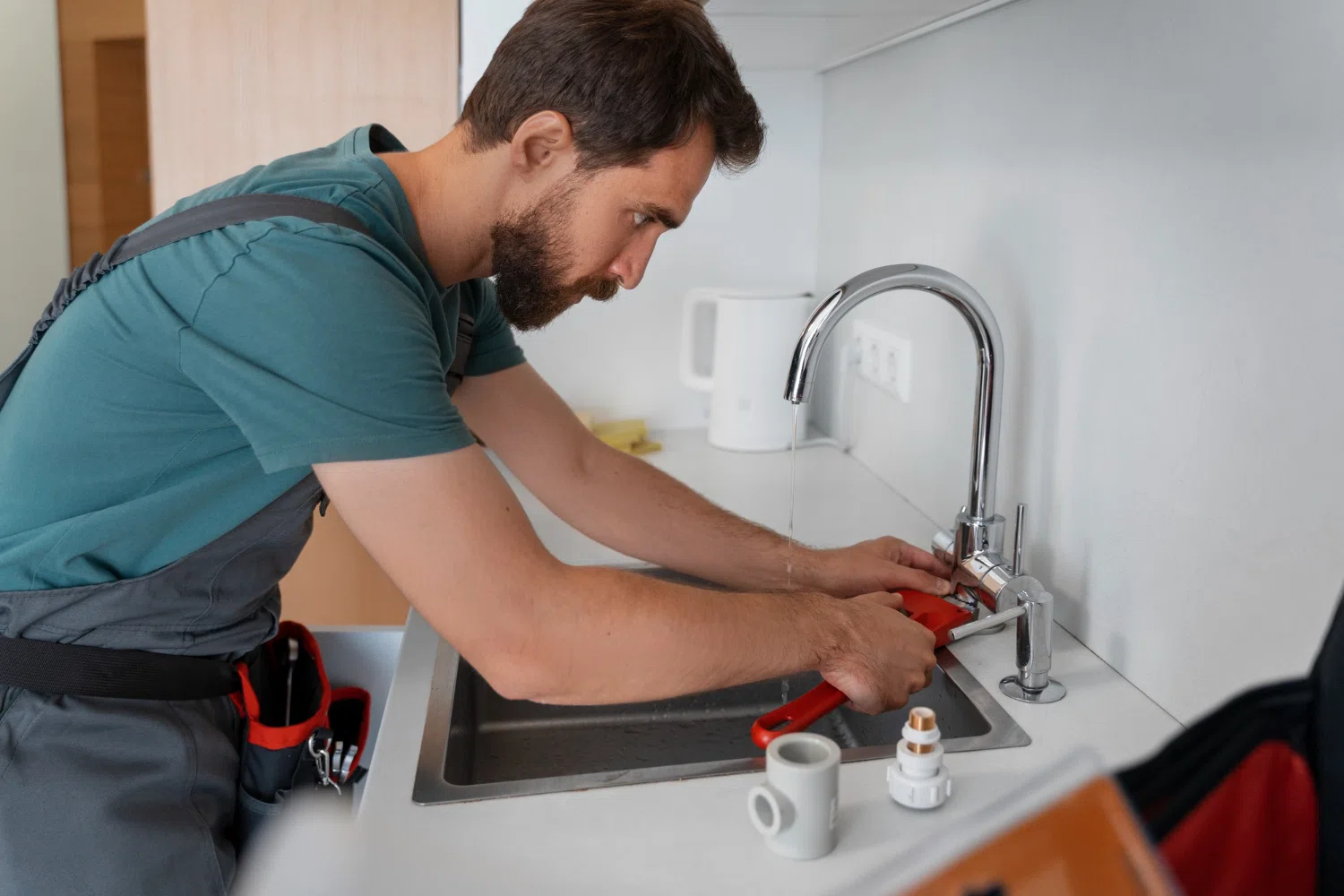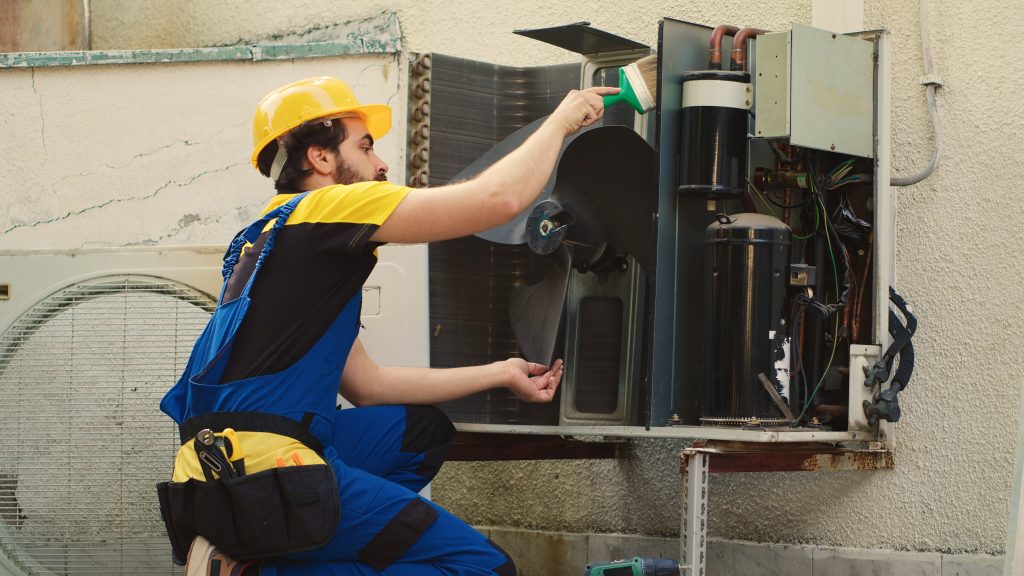Your home’s plumbing system maintenance doesn’t have to be a mystery. Stay ahead of issues before they become major bills or headaches. For this, you need proper awareness and knowledge.
A solid plumbing inspection checklist is the key that you should keep in your pocket. The goal of a home plumbing inspection checklist is to make your plumbing flow leak-free.
The blog covers the latest guidance from plumbing pros and digital tools. It’ll make inspections easier than ever. Now’s a great time to dive in!
Why Is a Plumbing Work Inspection Checklist Required?
Ignoring small problems leads to bigger messes. Imagine a dripping pipe that becomes mold. No one wants a clogged drain to cause water damage. And the list goes on!
According to experts, early detection through a focused checklist helps you identify hidden leaks. You’ll save yourself from outdated piping or faulty fixtures. Right before they explode into massive repair work.
What to Check? The Plumbing Home Inspection Checklist
Panicking at the last minute is not a solution! Rather be proactive. To keep you in the loop, we’ve shared a detailed checklist for plumbing work you can walk through area by area.
Main Water Supply & Shut-Off:
At first, locate the main water shut-off valve and confirm it works. Check the water meter. Does it keep moving when nothing’s using water? Further, inspect exposed water pipes for corrosion, damage, or visible leaks.
If needed, use a pressure gauge. By using it, you’ll test water pressure. Note that the ideal range is about 40-80 PSI.
Kitchen Plumbing:
Next, come to your kitchen to test sink faucets for drips or slow flow. Check both hot & cold. For smooth operation, check the shut-off valve under the sink.
Then, inspect the drain pipe and basket for signs of clogging or rust. If you have a dishwasher or fridge with a water line, inspect its supply hose for wear or leakage.
Bathroom Plumbing:
Here’s another most important part of your home, which is the bathroom. Make sure to test all faucets, showerheads, and flush functions. Be sure of smooth operation with no leaks.
You must need to inspect caulking around tubs, showers, and sinks. As gaps or cracks invite moisture behind walls. Keep an eye on slow drainage in tubs or shower pans. Try to look for wet spots around the toilet base.
Water Heater & Hot Water Systems:
Check the tank or unit for rust, leaks, or corrosion. Further, test the pressure relief valve to ensure it opens and closes properly. Look out for water stains or pooling around the heater. They’re the signs of hidden leaks.
Laundry & Utility Areas:
The laundry area shouldn’t be overlooked when doing an inspection procedure. Try to inspect washing-machine hoses for aging, that is, cracks or rust.
Old rubber hoses should be replaced. For secure connections, check the drain and supply lines behind machines. Test any sink drains or mop basins for smooth flow.
Exterior & Outdoor Plumbing:
Check outdoor hose bibs and faucets. You should look for leaks when turned on/off. Inspect irrigation or sprinkler system lines for leaks, clogs, or missing parts. Make sure gutters and downspouts divert water well away from the foundation. Sometimes, poor drainage compromises pipes and the home structure.
Drainage & Sewer Lines:
Look for slow drains, gurgling noises, or foul odors. They may hint at blocked or damaged sewer lines. Consider camera inspection of the main sewer line for tree root intrusion or corrosion. Do this if your property is older.

Preventive Plumbing Maintenance Checklist:
Preventive maintenance is where you save the most. Remember, catching issues early is far less expensive than reactive fixes. Below we’ve shared your go-to list:
Monthly:
Visual check of visible pipes, under-sink cabinets, and faucet handles for drips.
Quarterly:
Test water pressure, inspect hose connections, and check caulking around fixtures.
Annually:
Full inspection of water heater, main supply line, exterior systems & drainage.
Seasonally:
Before cold/hot seasons, ensure outdoor pipes are insulated or checked for freeze/damage.
When to Call a Professional:
DIY checks are great! But some situations need a plumber’s toolkit and expertise:
- Hidden leaks behind walls/floors you can’t access.
- Water pressure that’s consistently too high or too low.
- Older homes that are 30+ years old. Where the infrastructure may be outdated.
- Frequent clogs or sewer backup signs.
- Water heater concerns. This includes age, rust, and failing pressure relief.

FAQs:
How Often Should I Do a Full Residential Plumbing Inspection?
Conduct a full residential plumbing inspection at least once annually. Start with visual checks monthly and more detailed ones quarterly.
What’s the Most Overlooked Part of A Plumbing Inspection?
Outdoor fixtures and hose bibs are the parts that must be overlooked. Because many leaks start outside and affect interiors later.
Can I Just Use a PDF Checklist, or Do I Need Digital Tools?
PDFs work, but digital tools boost consistency and documentation. The tool, like apps with photo logging, can be used.
How Much Does a Professional Plumbing Inspection Cost?
The professional plumbing inspection cost varies by region and home size. For major repairs, think hundreds of dollars vs thousands.
What Pressure Should My Home Water Supply Be for Safe Operation?
The water supply should be between 40-80 PSI. Higher can stress appliances/pipes. Whereas lower may cause performance issues.
To Summarize:
A robust plumbing inspection checklist is your insurance against surprise leaks. The damaged pipes and costly repairs that occur suddenly make you clueless.
But you’ll maintain the flow and health of your home’s plumbing system by walking through the plumbing maintenance checklist regularly that we’ve shared in this blog.
Buying a new home? Managing an older one? Or want to be ahead of maintenance? Staying proactive and consistent is the key!
Remember: the small effort now saves big money later. Keep your system smooth, your water flowing, and your mind relaxed. You’ve got this!
Get assistance from Connect FM today if you require more expert advice on plumbing inspection. We’re here to help you be aware of any issues that may arise in your kitchen or washroom areas.




